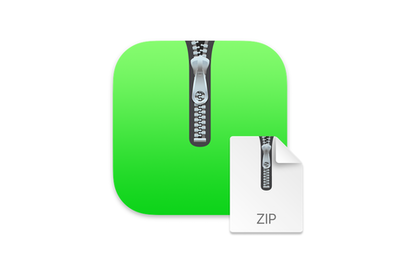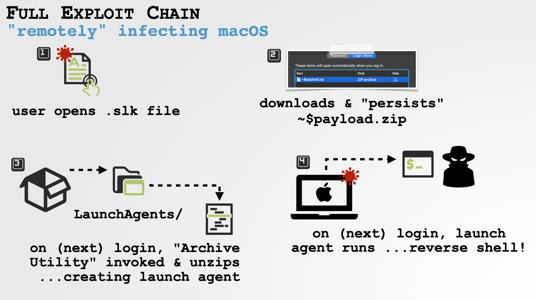Macos Zip Utility
In macOS, you can open a ZIP file with Apple Archive Utility by double-clicking the file. How do I create a ZIP file? Windows users can create ZIP archives by right-clicking a file and selecting 'Send to → Compressed (zipped) Folder.' MacOS users can create ZIP archives by right-clicking a file and selecting 'Compress filename.' Background Music, a macOS audio utility: automatically pause your music, set individual apps' volumes and record system audio. Topics audio macos objective-c cpp audio-utility. PowerArchiver Features. PowerArchiver combines many useful tools in a single package! Fastest and most feature packed file managment today! Advanced Codec Pack (.PA) is the most advanced format on the market.
Bandizip is a powerful archiver for macOS users with a variety of convenient features. Supported formats: ZIP, 7Z(lzma2), ZIPX(xz), TAR, TGZ, GZ; ZIP file modification (add/delete/rename) Multi-core compression 10+ times faster than the Finder. Background Music, a macOS audio utility: automatically pause your music, set individual apps' volumes and record system audio. Topics audio macos objective-c cpp audio-utility.
Moving from your PC to your new Mac? Consider it done.
With macOS, you can move all the information from your old PC to your new Mac. Built-in Windows-to-Mac migration in macOS automatically transfers your documents, music, contacts, calendars, and email accounts (Outlook and Windows Live Mail), and puts them in the appropriate folders and applications on your new Mac. Just like that.
If you buy your Mac at an Apple Store, Personal Setup can help you get off to a great start.
Work with anyone.
Every Mac comes with Pages, Numbers, and Keynote — powerful productivity apps from Apple that help you create stunning documents, spreadsheets, and presentations. You can collaborate with one person or many people to create and edit Pages, Keynote, and Numbers files. And everyone can work on the same document at the same time — from across town or across the globe. You can also open, edit, and save Microsoft Word, Excel, and PowerPoint files with these apps, so you can easily work with others, regardless of whether they’re on a Mac or PC.
Use Microsoft Office for Mac. Connect to Microsoft Exchange Server.
Fun fact: There’s a version of Microsoft Office written just for Mac. So you can use Word, Excel, and PowerPoint on a Mac just like on a PC.
macOS also provides built-in support for the latest version of Microsoft Exchange Server. So you can use all the apps you love on your Mac, and have access to your mail, contacts, and calendar from the office, all at the same time.
Access your files from anywhere with iCloud.
Your Mac comes with iCloud Drive, which lets you safely store all your presentations, spreadsheets, PDFs, images, and any other kinds of files in iCloud. Then you can access them from any device, including your iPhone, iPad, iPod touch, Mac, or PC.1
Industry standard‑bearer.
Thanks to its support for industry standards, macOS works with virtually all email providers and websites. It also lets you view the most common file types, including Office documents, PDFs, images, text files, MP3s, videos, ZIP files, and more.
So if you’re moving files from a PC or if your friends and colleagues send you files, you can rest assured they’ll work beautifully on your Mac.

Relax. Your camera, printer, and mouse work, too.
Almost any device that connects to a computer via USB, audio cable, or Bluetooth will work with a Mac. That includes digital cameras, external hard drives, printers, keyboards, speakers, and even your right-click mouse. And with technologies like AirPrint and the array of class drivers included with macOS, you can start using these devices as soon as you plug them in — no need to manually download additional software.
A Mac can even run Windows.
Have a Windows application you need to use once in a while? No problem. Every new Mac lets you install and run Windows at native speeds, using a built-in utility called Boot Camp.
Setup is simple and safe for your Mac files. After you’ve completed the installation, you can boot up your Mac using either macOS or Windows. (That’s why it’s called Boot Camp.) Or if you want to run Windows and Mac applications at the same time — without rebooting — you can install Windows using VMware or Parallels software.2
Connect to PCs over a network.
The Finder not only lets you browse files on your Mac, it also makes it easy to find files on other computers — both Mac and PC — on your home network. Computers that allow file sharing automatically show up in the Shared section of the Finder sidebar, allowing you to browse files and folders you have permission to view.

Works on macOS
- Microsoft Office for Mac and Word, Excel, and PowerPoint documents created on a Mac or PC
- Windows using Boot Camp or third-party software
- Access to Microsoft Exchange Server in Mail, Contacts, and Calendar
- Virtually all email services and providers
- Popular file types such as PDF, JPG, ZIP, MP3, PSD, and more
- Digital cameras, printers, hard drives, mice, and keyboards with USB connections
- Wi‑Fi hotspots and Windows networks
- Text messaging with Skype, Facebook, WeChat, LINE, and more
UPDATE: Back in August 2020 I showed you how to install macOS Big Sur with OpenCore on Linux. Back then Big Sur was in beta and you had to take some extra steps to install it. Now, that Big Sur is out of beta, the installation process was simplified and I’ve decided to create a new tutorial instead of editing the old one, to avoid any confusion. Let’s get started…
If you’re running a Linux distro as your daily driver, you can still other distros and OS’. You can even enjoy macOS. You can run Catalina using the clover bootloader and you can even install macOS in a Docker container.
Today we’re going to take a look at how set up a simple macOS Big Sur VM in QEMU, accelerated by KVM.
ALSO READHOW TO: Dual Boot macOS and Linux
REQUIREMENTS
- A modern Linux distribution
- QEMU > 2.11.1
- A CPU with Intel VT-x / AMD SVM support is required
- A CPU with SSE4.1 support is required for >= macOS Sierra
- A CPU with AVX2 support is required for >= macOS Mojave
- Internet access for the installation process
INSTALL QEMU & OTHER REQUIRED PACKAGES
Open the terminal and run: sudo apt install qemu uml-utilities virt-manager dmg2img git wget libguestfs-tools p7zip
NOTE: Adjust install command and, possibly, packages names according to your distro.
INSTALL macOS Big Sur
1. Open the terminal and run git clone --depth 1 https://github.com/kholia/OSX-KVM.git macOS-Big-Sur. When you’re done cloning the git repo, cd into path with cd macOS-Big-Sur
2. Download macOS Big Sur installer from Apple with ./fetch-macOS.py.
NOTE: Here you can choose which macOS you want to install. We will install Big Sur.
When the download is done, you should have InstallAssistan.pkg in your folder.
3. Now we need to unpack the downloaded InstallAssistan.pkg. To do this run 7z e -txar InstallAssistant.pkg '*.dmg'
This should give you the SharedSupport.dmg file
4. You’ll need to extract Basesystem.dmg from SharedSupport.dmg. First run 7z e -tdmg SharedSupport.dmg 5.hfs
Next create a folder called stuff with mkdir stuff and mount the hfs filesystem to the stuff folder with sudo mount -oloop *.hfs stuff
Inside the stuff/com_apple_MobileAsset_MacSoftwareUpdate folder, there’s a .zip file.
Run 7z l stuff/com_apple_MobileAsset_MacSoftwareUpdate/*.zip to list the contents of the .zip file with and you will see it contains the Basesystem.dmg that we need.
5. Copy the .zip file to your Desktop with cp stuff/*MacSoftwareUpdate/*.zip ~/Desktop
Extract Basesystem.dmg located inside the zip file on your Desktop > AssetData > Restore
Now move the Basesystem.dmg back to your macOS Big Sur folder and you can unmount the stuff folder created earlier with sudo umount stuff.
6. Convert BaseSystem.dmg to BaseSystem.img with qemu-img convert BaseSystem.dmg -O raw BaseSystem.img

7. Create a virtual HDD image where macOS will be installed. Run qemu-img create -f qcow2 mac_hdd_ng.img 128G
NOTE: You can change the size of the virtual drive. 128 GB is just an example. Also if, for any reason, you want to change the name of the disk image from mac_hdd.img to something else, you’ll also have to update OpenCore-BS.sh to point to the new image name.
8. Now we can start the installation. But before we do, let’s edit the OpenCore-Boot.sh and add more RAM ( by default it’s set to use 3 gigs of RAM ). 8 gigs should be enough. At least Apple seems to think so.
You can do that with your favorite GUI text editor or from the terminal with nano, micro or vim.
9. Now you can start the installation process. Run ./OpenCore-BS.sh .
10. You’ll be greeted by this screen. Choose macOS Base System
10. First thing you’ll need to do is run Disk Utility and format your virtual drive.
11. Exit Disk Utility, choose Reinstall macOS and go through the usual installation steps.
12. During the installation process, your virtual machine will restart and will boot back up. When it does, choose macOS Installer to continue the installation.
13. After a loong time of installing, you will eventually be able to boot into your macOS installation.
You will be greeted with the welcome screen where you can set up your account and settings.
Macos Zip Utility Billing
Don’t expect this to run just like a Mac. It’s a VM afterall. And it will feel sluggish mainly because there’s a lack of hardware acceleration. This can only be fixed by passing through a graphics card to the VM. To learn how to do that and other tips, and troubleshooting check out the official project on Github.
